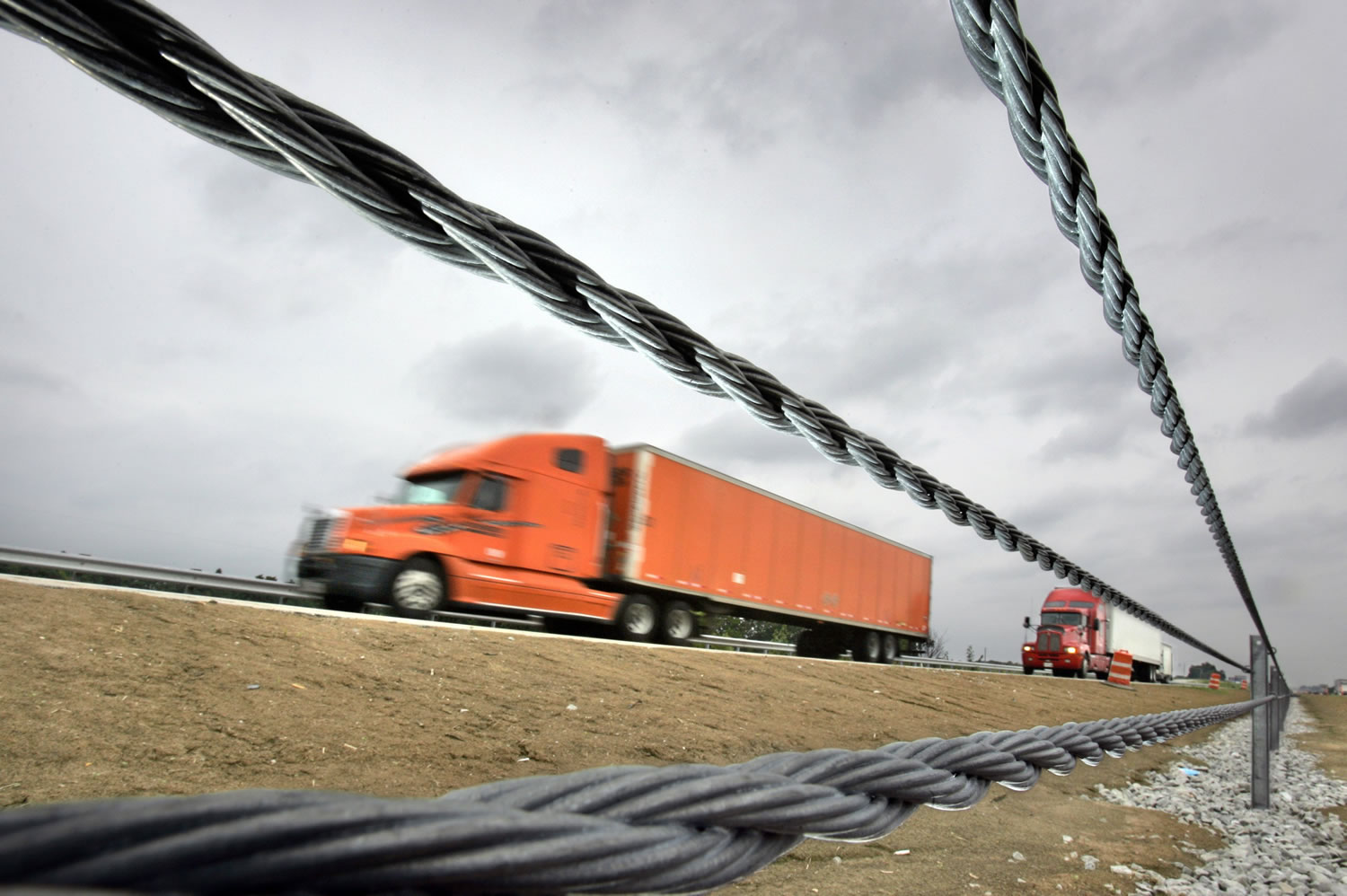WASHINGTON — Hundreds of interstate highway fatalities have been prevented in multiple states by relatively inexpensive safety devices that were not in place at the site of a fiery bus-truck collision last week in California that killed 10 people.
While interstates are statistically the country’s safest roadways, they’re also vulnerable to one of the deadliest kinds of crashes, where one vehicle crosses the median at a high speed and strikes another traveling the opposite direction.
At a time when states are pinching their transportation pennies, the installation of steel cable median barriers has helped states improve highway safety without a lot of investment.
“It’s very effective at capturing the vehicle,” said John Miller, a traffic safety engineer with the Missouri Department of Transportation. “We’ve seen a lot of great benefit from it.”
On April 10, a FedEx double-trailer truck crossed from the southbound to the northbound lanes of Interstate 5 in Orland, Calif., slamming into a motor coach that was taking a group of Los Angeles-area high school students on a visit to Humboldt State University.
The drivers of the two vehicles, five students and three chaperones were killed. Some victims were thrown from the bus, while others died in the ensuing fire. The National Transportation Safety Board is investigating the crash.
More than 300 fatal cross-median crashes happened on interstate highways in 2012, according to data from the National Highway Traffic Safety Administration.
Despite improved highway safety in states that have installed barriers along rural interstates in recent years, the federal government doesn’t require them in the medians of divided highways. Missouri and North Carolina, which have installed the barriers on parts or all of their interstate highways, have seen cross-median fatalities cut by as much as 90 percent. Others, such as Kentucky, are in the process of installing more.
“The widespread deployment of cable barrier in recent years has, in my opinion, saved many lives in our country,” said John Njord, who was Utah’s transportation secretary from 2001 to 2012.
At the location of last week’s deadly collision, the highway median lacks a steel cable barrier, which is designed to prevent regular-size cars and trucks from crossing into oncoming traffic. Though they’re not designed to stop heavy trucks, they often do.
The left shoulders of the California roadway are equipped with rumble strips, grooves in the pavement that warn drivers when they start to veer off the roadway because of distraction or drowsiness. The Federal Highway Administration recommends rumble strips on the left and right shoulders of divided highways, citing a study that showed vehicles were just as likely to veer left off the road as right.
The California Department of Transportation said last week’s crash site didn’t meet its requirements for installing median barriers, which include frequency of cross-median crashes, the width of the median and the daily average traffic count.
Caltrans spokesman Mark Dinger said that only one similar crash had taken place within two miles of the site within four years, below the level that would indicate a recurring problem. But he added that the agency wouldn’t rule out making changes.



